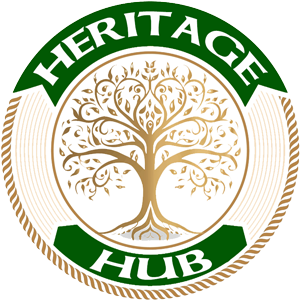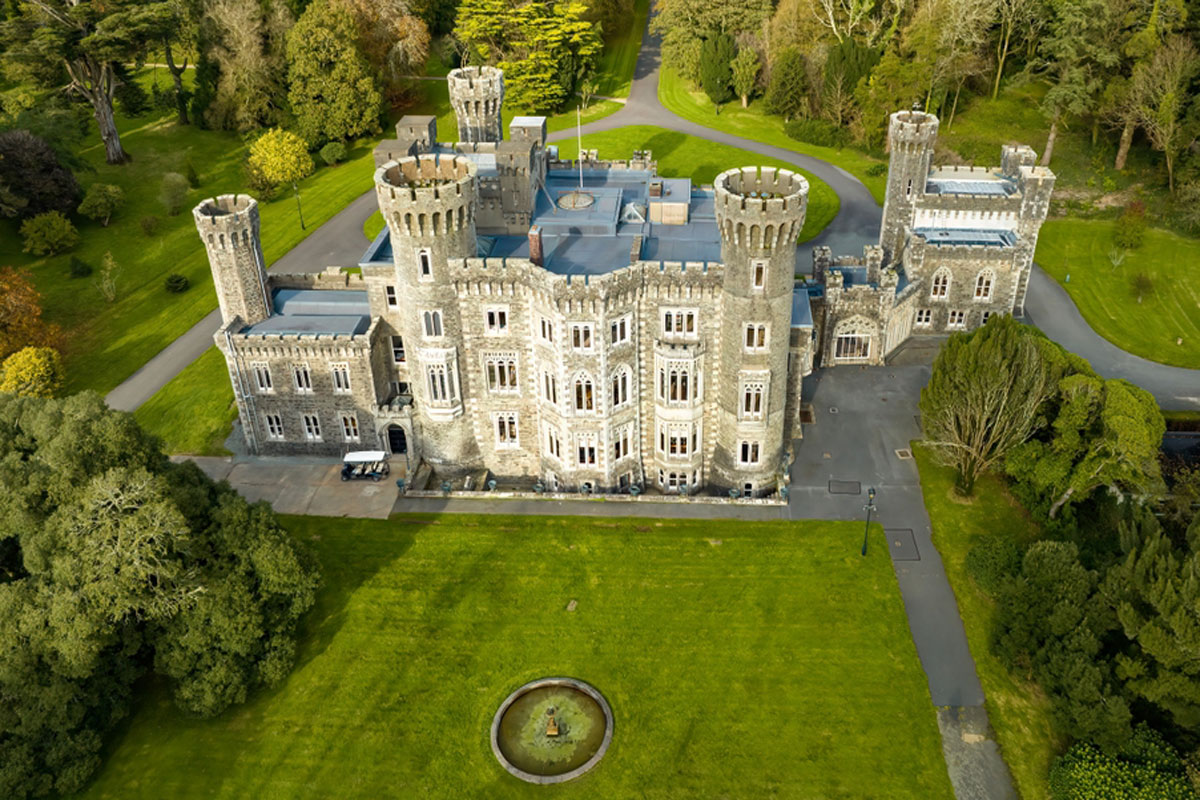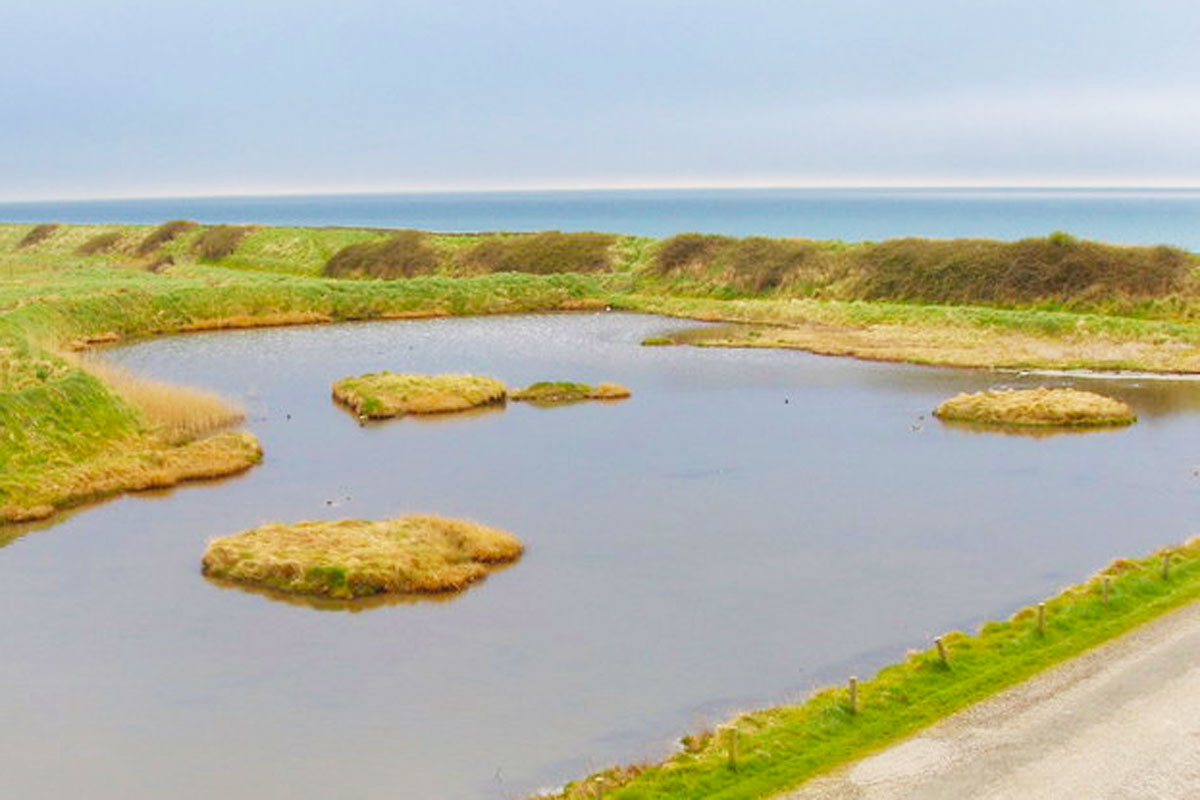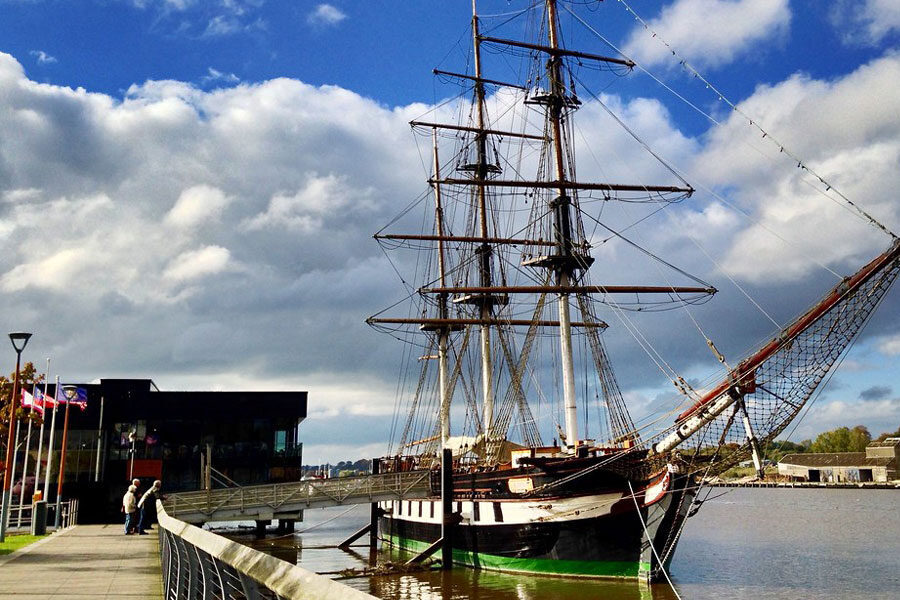Introduction to Johnstown Castle
Johnstown Castle, nestled in the heart of County Wexford, is a magnificent example of Gothic Revival architecture. This enchanting castle, surrounded by lush gardens and serene lakes, has a rich history that dates back centuries. We will now explore the various aspects of Johnstown Castle, from its architectural splendor to its beautifully designed gardens and the stories of the families who lived there.
A Glimpse into History
Johnstown Castle’s history begins in the 12th century when the lands were first granted to the Esmonde family. The original structure on the site was a Norman tower house, built to fortify and defend the land. Over the centuries, the castle changed hands several times, with each owner leaving their mark on its architecture and landscaping.
The Gothic Revival Transformation
The most significant transformation of Johnstown Castle occurred in the 19th century under the ownership of the Grogan family. In 1810, Cornelius Grogan was executed for his involvement in the 1798 rebellion, and the estate was inherited by his brother John Grogan. John and his descendants, particularly his nephew Hamilton Knox Grogan-Morgan, embarked on an ambitious project to remodel the castle in the Gothic Revival style, which was highly fashionable at the time.
Architectural Highlights
Johnstown Castle’s Gothic Revival architecture is characterized by its dramatic, medieval-inspired features. Key highlights include:
- Towers and Turrets: The castle boasts several towers and turrets, adding to its fairytale-like appearance. These structures were not only decorative but also served practical purposes in the original defensive design.
- Stone Facades: The castle’s exterior is adorned with intricate stonework, including pointed arches, decorative finials, and ornate carvings that reflect the Gothic Revival style.
- Stained Glass Windows: The use of stained glass windows adds a colorful and ethereal quality to the castle’s interior, casting vibrant patterns of light into the rooms.
The Gardens and Grounds
Surrounding the castle are extensive gardens and grounds, meticulously designed to complement the grandeur of the castle itself. These gardens are a testament to the 19th-century passion for landscaping and horticulture. Key features include:
- Formal Gardens: The formal gardens feature manicured lawns, geometric flowerbeds, and carefully trimmed hedges, creating a sense of order and symmetry.
- Lakes and Waterways: The property includes several lakes and waterways, which were often used for boating and fishing. These water features enhance the tranquil and picturesque setting of the castle.
- Woodland Walks: The wooded areas around the castle offer shaded pathways and a variety of native and exotic trees, providing a natural retreat for visitors.
The Grogan Family Legacy
The transformation of Johnstown Castle into the Gothic Revival masterpiece it is today is largely credited to the Grogan family. Their influence and dedication to the estate have left an indelible mark on its history and architecture.
The Grogan Family’s Arrival
The Grogan family came into possession of Johnstown Castle in the 17th century. The estate originally belonged to the Esmonde family, but due to their involvement in the Irish Rebellion of 1641, the property was confiscated and later granted to the Grogan family. The Grogans were a prominent Anglo-Irish family, and their acquisition of Johnstown Castle marked the beginning of a new era for the estate.
Cornelius Grogan and the 1798 Rebellion
One of the most notable members of the Grogan family was Cornelius Grogan. A controversial figure, Cornelius was a supporter of the United Irishmen, a revolutionary group that sought to end British rule in Ireland. His involvement in the 1798 Rebellion ultimately led to his execution. Following his death, the estate passed to his brother John Grogan.
Hamilton Knox Grogan-Morgan and the Gothic Revival
The most significant transformation of Johnstown Castle occurred under the ownership of Hamilton Knox Grogan-Morgan, a nephew of John Grogan. Hamilton was a man of vision and ambition. After inheriting the estate, he undertook an extensive remodeling project to convert the existing structure into a Gothic Revival castle, a style that was highly fashionable in the 19th century.
Key Contributions by Hamilton Knox Grogan-Morgan
- Architectural Transformation: Hamilton Knox Grogan-Morgan worked with renowned architect Daniel Robertson to redesign Johnstown Castle. The transformation included the addition of towers, turrets, and ornate stone facades, giving the castle its iconic Gothic appearance.
- Landscaping the Grounds: Hamilton was also passionate about landscaping. He hired the leading garden designer of the time, Daniel Robertson, to create the elaborate gardens and grounds that surround the castle. This collaboration resulted in the beautiful formal gardens, lakes, and woodland walks that visitors enjoy today.
- Cultural Patronage: Hamilton was a patron of the arts and culture. His influence extended beyond architecture and landscaping, as he supported various cultural initiatives and events in the region, further enhancing the castle’s reputation as a cultural hub.
The Legacy Continues
The Grogan family’s legacy at Johnstown Castle extends beyond Hamilton Knox Grogan-Morgan. The subsequent generations of the family continued to maintain and enhance the estate, ensuring its preservation and beauty.
- Maintaining the Estate: The Grogan family took great care in maintaining the castle and its grounds, ensuring that it remained a symbol of their family’s heritage and pride.
- Community Involvement: The family also played an active role in the local community, supporting various social and charitable initiatives. Their contributions helped improve the lives of many in the surrounding areas.
- Preservation Efforts: In the 20th century, the estate was eventually sold to the Irish State, with a significant portion of the grounds being handed over to the Irish Agricultural Institute. The family’s commitment to preservation ensured that Johnstown Castle would continue to be enjoyed by future generations.
Exploring the Gardens
The gardens of Johnstown Castle are a masterpiece in their own right, reflecting the passion and vision of the Grogan family and the expertise of landscape designer Daniel Robertson. Spanning over 120 acres, the gardens offer a variety of picturesque landscapes, from formal gardens to serene lakes and enchanting woodland walks.
The Formal Gardens
The formal gardens at Johnstown Castle are meticulously designed, featuring geometric flowerbeds, manicured lawns, and carefully trimmed hedges. These gardens showcase a blend of Victorian style and natural beauty, creating an elegant and serene atmosphere.
Key Features:
- Parterre Gardens: The parterre gardens are characterized by their symmetrical layouts and intricate designs. These gardens often feature colorful flowerbeds arranged in patterns, bordered by low hedges.
- Statues and Fountains: Scattered throughout the formal gardens are various statues and fountains, adding to the aesthetic appeal. These elements serve as focal points and enhance the classical beauty of the landscape.
- Seasonal Blooms: The formal gardens are planted with a variety of flowers that bloom in different seasons, ensuring that there is always something beautiful to see no matter the time of year.
The Lakes and Waterways
The lakes and waterways of Johnstown Castle add a tranquil and reflective element to the gardens. These water features not only provide stunning views but also support a diverse range of wildlife.
Key Features:
- Ornamental Lakes: The estate includes several ornamental lakes, which are perfect for leisurely walks along their shores. The largest of these lakes offers picturesque views of the castle reflected in its waters.
- Bridges and Islands: Charming bridges connect various parts of the gardens, and some of the lakes feature small islands accessible by these bridges, providing secluded spots for contemplation.
- Wildlife Habitat: The lakes are home to various species of birds, fish, and aquatic plants, making them a haven for nature lovers and wildlife enthusiasts.
The Walled Garden
The walled garden is a hidden gem within Johnstown Castle, offering a more intimate and secluded space compared to the expansive formal gardens. Enclosed by high stone walls, this garden creates a microclimate ideal for growing a variety of plants.
Key Features:
- Historic Greenhouses: The walled garden includes historic greenhouses where exotic plants and fruits were grown. These greenhouses are a testament to the innovative gardening practices of the 19th century.
- Herbaceous Borders: The borders of the walled garden are filled with a variety of herbaceous plants, providing a burst of color and fragrance. These borders are carefully curated to ensure a continuous display of blooms throughout the growing season.
- Fruit Trees and Kitchen Garden: Traditionally, walled gardens were used to grow fruits and vegetables for the estate. Today, you can still find fruit trees and a small kitchen garden, reflecting the garden’s historical use.
Woodland Walks
The woodland walks at Johnstown Castle offer a serene escape into nature. These paths wind through shaded areas filled with native and exotic trees, providing a peaceful retreat for visitors.
Key Features:
- Variety of Trees: The woodlands are home to a diverse range of tree species, including oak, beech, and chestnut, as well as more exotic varieties such as redwood and cedar.
- Shaded Paths: The shaded paths are perfect for leisurely strolls, offering a cool respite on warm days. The dappled sunlight filtering through the canopy creates a magical atmosphere.
- Wildlife Encounters: The woodland areas are teeming with wildlife, including birds, squirrels, and occasionally deer. These encounters add to the charm and natural beauty of the walks.
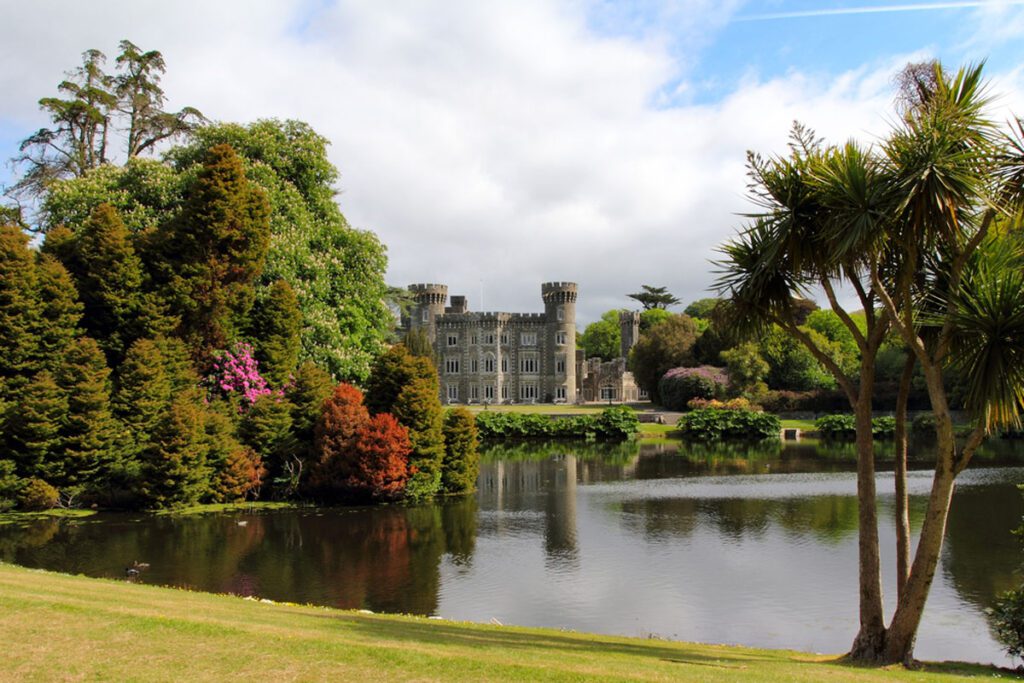
The Castle’s Interiors
The interiors of Johnstown Castle are as enchanting as its exterior, offering a glimpse into the lavish lifestyle and refined tastes of its former inhabitants. The rooms are adorned with period furnishings, intricate woodwork, and exquisite details that reflect the Gothic Revival style.
The Grand Entrance Hall
The tour of Johnstown Castle begins at the grand entrance hall, which sets the tone for the rest of the castle with its impressive design and opulent details.
Key Features:
- Gothic Arches: The entrance hall is characterized by its pointed Gothic arches, which create a sense of height and grandeur.
- Intricate Woodwork: The woodwork in the entrance hall is intricately carved, showcasing the craftsmanship of the period.
- Stained Glass Windows: The hall is illuminated by stained glass windows that cast colorful patterns of light across the room.
The Drawing Room
The drawing room, often the centerpiece of social gatherings, exudes elegance and sophistication.
Key Features:
- Chandeliers: Crystal chandeliers hang from the ceiling, adding a touch of glamour and illuminating the room with a warm glow.
- Period Furniture: The room is furnished with period pieces, including ornate sofas, armchairs, and side tables, all arranged to facilitate conversation and relaxation.
- Fireplace: A grand fireplace, often the focal point of the room, features intricate stonework and provides a cozy atmosphere.
The Dining Room
The dining room at Johnstown Castle is designed for formal dinners and entertaining guests in style.
Key Features:
- Long Dining Table: A long, polished dining table takes center stage, surrounded by high-backed chairs upholstered in rich fabrics.
- Candelabras: Silver candelabras adorn the table, adding to the room’s opulence and providing soft lighting during meals.
- Portraits and Paintings: The walls are adorned with portraits of the Grogan family and landscape paintings, adding an artistic touch to the room.
The Library
The library is a haven for book lovers and scholars, filled with an impressive collection of volumes and offering a quiet retreat.
Key Features:
- Bookshelves: Floor-to-ceiling bookshelves line the walls, filled with leather-bound books and rare manuscripts.
- Reading Nooks: Comfortable reading nooks with plush armchairs and small tables are strategically placed near windows for natural light.
- Decorative Ceiling: The ceiling is often decorated with intricate plasterwork or wood paneling, adding to the room’s charm.
The Bedrooms
The bedrooms at Johnstown Castle provide a glimpse into the private lives of its residents, offering comfort and luxury.
Key Features:
- Four-Poster Beds: Many of the bedrooms feature four-poster beds with elaborate drapery, creating a sense of grandeur and privacy.
- Antique Furnishings: The rooms are furnished with antique dressers, nightstands, and wardrobes, each piece carefully chosen for its beauty and historical significance.
- Decorative Fabrics: Rich fabrics, including velvet and silk, are used for curtains, bedspreads, and upholstery, adding a touch of luxury to the rooms.
The Chapel
The chapel at Johnstown Castle reflects the spiritual life of the estate’s inhabitants and is a place of quiet reflection and worship.
Key Features:
- Altar and Pews: The chapel features a simple yet elegant altar and rows of wooden pews for worshippers.
- Stained Glass Windows: The windows in the chapel are adorned with religious motifs, casting colorful light into the sacred space.
- Quiet Ambiance: The chapel’s design fosters a serene and contemplative atmosphere, providing a peaceful retreat from the rest of the castle.
Johnstown Castle Today
Johnstown Castle, with its rich history and stunning architecture, has been carefully preserved and is now enjoyed by the public as a heritage site. Let us now explore how Johnstown Castle and its gardens are maintained, the visitor experience, and the various activities and events that take place on the estate today.
Preservation and Restoration
The preservation and restoration of Johnstown Castle have been ongoing efforts to ensure that its historical and architectural integrity remain intact for future generations.
Key Efforts:
- Restoration Projects: Significant restoration projects have been undertaken to repair and maintain the castle’s stonework, interiors, and gardens. This includes the conservation of historical artifacts, furniture, and artworks within the castle.
- Gardens Maintenance: The extensive gardens are meticulously maintained by a dedicated team of horticulturists and gardeners. This ensures that the formal gardens, lakes, and woodlands retain their beauty and biodiversity.
- Collaborations and Funding: Preservation efforts are often supported by collaborations between heritage organizations, government bodies, and private donors. Funding from these sources helps finance ongoing restoration and conservation projects.
The Visitor Experience
Johnstown Castle is open to the public, offering visitors a chance to explore its historical and natural beauty. The estate provides a variety of attractions and activities to ensure a memorable experience for all.
Attractions:
- Guided Tours: Visitors can join guided tours of the castle’s interiors, where knowledgeable guides share fascinating stories about the castle’s history, architecture, and former inhabitants.
- Gardens and Walks: The gardens are open for leisurely strolls, with well-marked paths leading through the formal gardens, around the lakes, and into the woodlands. Informational plaques provide insights into the plant species and garden design.
- Visitor Center: The on-site visitor center features exhibits on the history of Johnstown Castle and the Grogan family, as well as displays of artifacts discovered on the estate. The center also includes a gift shop and café.
Activities and Events
Throughout the year, Johnstown Castle hosts a variety of activities and events that cater to different interests and age groups.
Events:
- Seasonal Events: Seasonal events, such as spring garden tours, summer festivals, and Christmas markets, attract visitors and celebrate different aspects of the estate’s heritage and natural beauty.
- Workshops and Talks: Educational workshops and talks on topics such as gardening, history, and conservation are regularly organized, offering visitors a chance to learn and engage with experts.
- Family-Friendly Activities: The estate offers family-friendly activities, including treasure hunts, storytelling sessions, and interactive exhibits, ensuring that visitors of all ages can enjoy their visit.
Supporting the Castle
Visitors can support Johnstown Castle and its preservation efforts through various means.
Support Options:
- Memberships: Annual memberships provide unlimited access to the estate and exclusive member events, while also contributing to the funding of conservation projects.
- Donations: Donations from individuals and organizations are vital for ongoing restoration and maintenance work. Supporters can contribute directly through the estate’s website or visitor center.
- Volunteering: Volunteering opportunities are available for those who wish to actively participate in the preservation and promotion of Johnstown Castle. Volunteers assist with guided tours, garden maintenance, and special events.
Conclusion
Johnstown Castle and Gardens stand as a testament to Ireland’s rich history and architectural heritage. Through careful preservation and ongoing efforts to engage the public, this Gothic Revival masterpiece continues to enchant and educate visitors from around the world. Whether you’re a history enthusiast, a nature lover, or simply seeking a beautiful and tranquil escape, Johnstown Castle offers a unique and unforgettable experience.
County Wexford, located in Ireland’s sunny southeast, is celebrated for its golden beaches, historic landmarks, and rich cultural heritage. Here’s a guide to its most notable tourist attractions:
Historical and Cultural Sites
- Hook Lighthouse: The world’s oldest operational lighthouse, offering guided tours and breathtaking views of the coastline.
- Irish National Heritage Park: An open-air museum showcasing 9,000 years of Irish history with reconstructed ancient sites.
- Dunbrody Famine Ship: A replica famine ship in New Ross that tells the story of emigration during the Great Famine.
- Tintern Abbey: A picturesque 12th-century abbey with beautiful woodland walks nearby.
- Johnstown Castle Estate, Museum & Gardens: A stunning Gothic Revival castle with lakes, gardens, and an agricultural museum.
Natural Attractions
- Curracloe Beach: A pristine Blue Flag beach famous for its appearance in Saving Private Ryan.
- The Raven Nature Reserve: A coastal forest offering peaceful walks and opportunities for birdwatching.
- Saltee Islands: A haven for birdlife, particularly puffins, and accessible by boat from Kilmore Quay.
- Ballymoney Beach: A family-friendly spot with golden sands and clear waters.
- Bannow Bay: A tranquil estuary with a rich history and stunning views.
Scenic Drives and Villages
- Kilmore Quay: A charming fishing village with traditional thatched cottages and access to the Saltee Islands.
- Enniscorthy: A historic town featuring Vinegar Hill, Enniscorthy Castle, and a vibrant arts scene.
- Wexford Town: The county capital known for its medieval streets, opera festival, and friendly atmosphere.
- New Ross: A riverside town famous for the Dunbrody Famine Ship and the JFK Homestead.
- Gorey: A bustling market town with excellent shopping, dining, and proximity to beaches.
Lakes and Water Activities
- River Slaney: Perfect for kayaking, fishing, and riverside walks.
- Lake at Johnstown Castle: A serene setting for leisurely strolls and picnics.
- Kilmore Quay Marina: Ideal for boating, fishing, and exploring the nearby Saltee Islands.
- Bannow Bay: A peaceful spot for kayaking and enjoying scenic views.
- Rosslare Strand: A popular destination for swimming, surfing, and other water sports.
Unique Experiences
- Wexford Opera House: Home to the annual Wexford Festival Opera, renowned for its world-class performances.
- Kennedy Homestead: The ancestral home of JFK’s family, showcasing his legacy and Irish roots.
- Hook Peninsula Drive: A scenic route with stunning coastal views and historic sites like Duncannon Fort.
- Loftus Hall: Ireland’s most haunted house, with eerie tales and ghost tours.
- Ballycross Apple Farm: A family-friendly attraction offering seasonal apple picking and homemade treats.
County Wexford combines natural beauty, historical significance, and vibrant culture. Whether strolling along Curracloe Beach or exploring the heritage of the Hook Peninsula, Wexford promises a diverse and enriching experience for every visitor.
Helpful Resources


